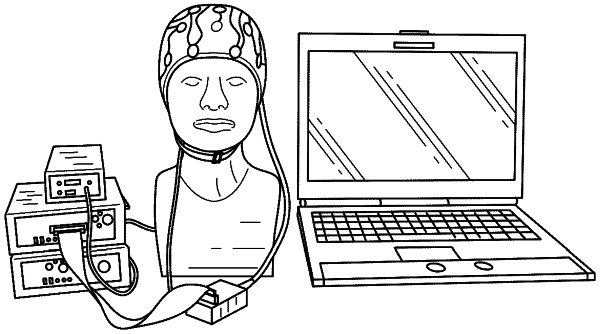| CPC G09B 19/00 (2013.01) [A61B 5/0006 (2013.01); A61B 5/0022 (2013.01); A61B 5/377 (2021.01); G16H 10/60 (2018.01)] | 17 Claims |

|
1. A computer-implemented system for obtaining therapeutic rehabilitation guidelines for a patient suffering from aphasia, the system comprising:
an input means for receiving evoked event-related potential data obtained through electroencephalography of a patient, the evoked event-related potential data being evoked by providing at least one predetermined language paradigm to the patient and the evoked event-related potential data comprising amplitude, latency and source information for the evoked event-related potentials,
a processor for processing the evoked event-related potential data comprising evaluating whether one or more of an amplitude, latency or source are within predetermined criteria for said at least one predetermined language paradigm and deriving based thereon therapy instructions to be applied to the patient, and
an output means for outputting the therapy instructions to be applied to the patient suffering from aphasia.
|